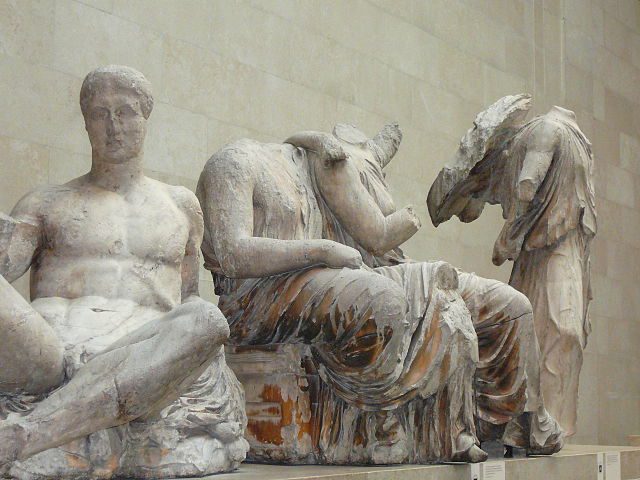
Imagine walking through the Louvre, your eyes soaking in the grandeur of the art when you stumble upon the Mona Lisa. Now, picture this: What if, tomorrow, the Mona Lisa was no longer there? What if it was returned to Italy, its country of origin? This scenario is a microcosm of the global debate on the repatriation of art.
Is repatriation a matter of justice, restoring stolen or displaced artifacts to their rightful homes? Or is it a political maneuver, a game of power and influence? This article explores both sides of this captivating and contentious topic. We will examine historical contexts, ethical arguments, practical concerns, political dimensions, and real-life stories to provide a comprehensive view.
Historical Context of Art Repatriation
The history of art repatriation is deeply intertwined with the history of conquest and colonization. Early examples include the Romans, who famously looted art from conquered territories. Napoleon’s campaigns in Europe also saw significant art seizures, many of which were later returned. These historical precedents set the stage for modern debates about cultural restitution.
During the colonial era, European powers removed vast quantities of artifacts from their colonies. This was often done under the guise of preservation or education. However, these actions stripped many cultures of their heritage. Today, these historical injustices fuel many repatriation claims.
In more recent history, efforts to repatriate art have become more common. Post-World War II saw the return of art looted by the Nazis. International agreements, like the 1970 UNESCO Convention, aim to prevent illicit trafficking and facilitate returns. Yet, the process remains complex and fraught with legal and ethical challenges.
Understanding this historical context is crucial to appreciating the depth of the repatriation debate. It’s not just about individual artifacts but about the broader impacts on cultural identity and historical justice. By looking back, we can better understand the motivations and obstacles in the present. This historical perspective sets the foundation for the arguments to come.
The Case for Repatriation: Righting Historical Wrongs
Advocates for repatriation argue that it is fundamentally about correcting historical injustices. Artifacts and artworks were often taken during times of colonial conquest, war, or through dubious means. Imagine having your cultural heritage ripped away and displayed in a foreign land, thousands of miles away. It’s not just about art; it’s about identity and history.
One prominent example is the Elgin Marbles, removed from the Parthenon in Athens by Lord Elgin in the early 19th century. Greece has long demanded their return, viewing them as integral to their national heritage. For many, these marbles symbolize the soul of Greek history and culture. Their return is seen as a way to heal the wounds of past exploitation.
George Clooney, an outspoken advocate for the return of the marbles, once said, “A piece of history that belongs to Greece should be in Greece.” This sentiment resonates with many who see repatriation as a matter of justice. It’s about restoring cultural heritage to its rightful place. The debate is not just legal but deeply emotional and cultural.
Repatriation can also be a form of reparation. By returning stolen or displaced artifacts, countries acknowledge past wrongs and make amends. This act of restitution can help build better international relationships. It recognizes the enduring significance of cultural heritage and respects the rights of origin communities.
The Argument Against Repatriation: Preservation and Access
However, there’s another side to the story. Many museums argue that they are better equipped to preserve and protect these artifacts. They claim to offer greater access to the public, providing educational opportunities to millions worldwide. Think about the Rosetta Stone, residing in the British Museum.
If it were returned to Egypt, would as many people have the chance to see and learn from it? Critics of repatriation suggest that keeping such artifacts in prominent, well-funded institutions ensures their survival and accessibility. Museums often have the resources and expertise to maintain these priceless pieces. This perspective emphasizes the educational value and preservation capabilities of major museums.
Additionally, these institutions often conduct extensive research on these artifacts. This research can contribute significantly to global historical and cultural knowledge. Returning artifacts could disrupt ongoing studies and educational programs. Hence, some argue that repatriation might limit the academic and cultural benefits these artifacts provide to a wider audience.
Moreover, there are concerns about the safety and preservation of repatriated artifacts. Some countries may lack the facilities or expertise to properly care for them. Instances of repatriated artifacts suffering from poor conditions or neglect are not unheard of. This adds another layer of complexity to the repatriation debate.
The Political Dimension of Repatriation
Let’s not kid ourselves—politics play a huge role in this debate. Repatriation can be a tool for diplomacy or a point of contention between nations. When Nigeria demands the return of the Benin Bronzes from European museums, it’s not just about the art. It’s about reclaiming cultural sovereignty and addressing the lingering impacts of colonialism.
But here’s the kicker: not all claims are straightforward. Some artifacts were legally acquired, bought, or exchanged. The lines between right and wrong can blur, making the process complex and often contentious. The political dimension adds layers of complexity to the already intricate debate.
Repatriation cases often involve high-level negotiations and diplomatic efforts. These discussions can become tangled in historical grievances and national pride. For some countries, reclaiming artifacts is a way to assert their independence and rectify colonial wrongs. The political stakes can make the process slow and fraught with tension.
Furthermore, repatriation can sometimes be used as a bargaining chip in international relations. Countries may leverage repatriation demands to gain political or economic advantages. This intertwining of politics and cultural heritage can complicate genuine efforts to right historical wrongs. It underscores the need for transparent and fair processes in repatriation efforts.
Real-Life Repatriation Stories
The Benin Bronzes
In 2021, Germany agreed to return the Benin Bronzes to Nigeria. This decision marked a significant step in acknowledging and rectifying historical theft. These artifacts were looted by British forces in 1897 from the Kingdom of Benin (modern-day Nigeria). Their return is seen as a major victory for advocates of repatriation.
The Benin Bronzes are not just art pieces but hold deep cultural and historical significance. Their repatriation is a move towards healing and reconciliation. It also sets a precedent for other institutions holding similar artifacts. This case illustrates the potential for positive outcomes in the repatriation debate.
The return of the Benin Bronzes was the result of years of persistent advocacy. It involved complex negotiations and international cooperation. The successful repatriation highlights the importance of collaboration and mutual respect. It serves as a model for future repatriation efforts.
The Koh-i-Noor Diamond
This famed diamond, now part of the British Crown Jewels, was taken from India during the colonial era. India has repeatedly asked for its return, but the UK maintains that its acquisition was legal. The debate rages on, embodying the complexities of repatriation politics. Each side presents compelling arguments rooted in history and law.
The Koh-i-Noor’s story highlights the broader issues of colonial legacy and ownership. Its return would be symbolic for India, representing a reclaiming of heritage. However, the legal complexities make its repatriation challenging. This ongoing debate showcases the intricate balance of justice and legality in repatriation cases.
Repatriation of the Koh-i-Noor would have significant political implications. It would signal a shift in the relationship between the UK and its former colonies. This makes the process highly sensitive and politically charged. The diamond’s fate remains uncertain, reflecting the broader challenges of repatriation.
Questions to Ponder
So, where do you stand? Should we return art to its country of origin, or should we prioritize preservation and global access? Can we find a balance between justice and practicality? What about the potential loss of cultural exchange?
If every artifact was returned, would our museums lose their diversity, becoming regional rather than global repositories of culture? The debate is not just about right or wrong but finding a harmonious solution. Could collaborative solutions offer a way forward? These questions remain central to the ongoing discussion.
The ethical dilemmas surrounding repatriation are profound. They touch on issues of historical justice, cultural identity, and international relations. Practical challenges also abound, from logistics to preservation. Engaging with these questions can help us navigate this complex terrain.
Encouraging open dialogue is crucial. By discussing and debating these issues, we can better understand different perspectives. This can lead to more informed and equitable decisions. Let’s keep the conversation going and explore potential solutions together.
A Path Forward: Collaborative Solutions
Perhaps the answer lies in collaboration. Joint custody agreements, long-term loans, and shared exhibitions can offer a middle ground. This way, artifacts can be enjoyed and studied in their place of origin while also benefiting from the resources of world-class museums. Such arrangements can foster mutual understanding and respect.
Take, for instance, the collaborative efforts between the British Museum and Nigeria’s National Commission for Museums and Monuments. These partnerships can ensure that treasures are preserved and appreciated by a global audience. Collaboration might be the key to resolving these complex issues. It’s about finding solutions that respect both heritage and global access.
Joint initiatives can also enhance research and education. By sharing resources and expertise, institutions can conduct more comprehensive studies. This benefits not only the countries involved but the global academic community. Such cooperation can lead to new discoveries and a deeper understanding of cultural heritage.
Future prospects for collaborative solutions look promising. Increasingly, museums and cultural institutions are recognizing the value of partnership. This trend can help bridge the gap between justice and practicality in the repatriation debate. By working together, we can ensure that cultural treasures are both honored and preserved.
Conclusion: Justice, Politics, or Both?
The repatriation of art is a complex issue with no easy answers. It straddles the line between justice and politics, often intertwining both in ways that are hard to unravel. As we move forward, it’s crucial to engage in open, respectful dialogue, recognizing the profound significance these artifacts hold for their countries of origin. In the end, maybe it’s not about choosing sides but finding common ground.
After all, maybe art “belongs” to humanity, and its true value lies in its ability to connect us all, transcending borders and politics. What are your thoughts on this issue? Let’s keep the conversation going.




